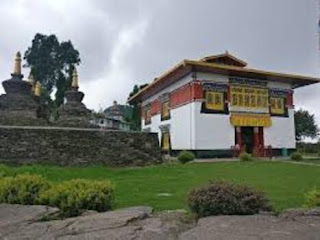Nestled in the heart of Odisha, India, the Khandagiri Caves stand as an enduring testament to the region's rich historical and cultural tapestry. These ancient caves, carved into the soft sandstone hills, are not just a natural wonder but also a significant relic of India's past, particularly relating to the early Jain community.
The Khandagiri Caves date back to the 2nd century BCE and are believed to have been created during the reign of King Kharavela of the Mahameghavahana dynasty, who ruled over the region of Kalinga. Kharavela was known for his patronage of Jainism, which thrived in Odisha during his reign.
The caves, along with their counterpart, the Udayagiri Caves, were primarily used as monastic retreats for Jain monks. Archaeological evidence suggests that these caves served as residential quarters, prayer halls, and meditation spaces, echoing the spiritual pursuits of the ascetic lifestyle championed by Jainism.
Khandagiri comprises a series of about 33 caves, each with distinct architectural features. The most notable among them is the "Mahavir Cave," which houses an intricately carved sculpture of Lord Mahavira, the 24th Tirthankara of Jainism.
The caves exhibit a blend of simplistic designs and elaborate carvings, highlighting the artistic capabilities of the artisans of that era. The largest cave, known as "Ananta," features an impressive facade that hints at the significance of the location.
Inscriptions found on the walls of Khandagiri Caves provide valuable information about the socio-economic conditions, religious practices, and cultural aspects of ancient India. These inscriptions, written in Prakrit and Brahmi scripts, detail various aspects of Jain beliefs and highlight the patronage received from rulers, further emphasizing the political importance of the caves.
The Khandagiri Caves also serve as a reminder of the coexistence of various religious traditions in ancient India. While primarily associated with Jainism, evidence suggests that other faiths, including Buddhism and Hinduism, had significant interactions and influences in the region.
Today, the Khandagiri Caves are recognized as a monument of national importance and are protected by the Archaeological Survey of India. They are a popular tourist destination, attracting visitors interested in archaeology, history, and spirituality.
Efforts are underway to preserve and promote the site, ensuring that it remains a point of interest for generations to come. Educational initiatives aim to raise awareness about the importance of the Khandagiri Caves in India's historical narrative.
The Khandagiri Caves are a compelling fusion of history, art, and spirituality. As silent witnesses to centuries of transition, they offer valuable insights into the lives of ancient civilizations and their belief systems. By exploring these caves, one not only unravels the architectural marvels of the past but also embarks on a journey through the rich tapestry of India’s cultural heritage..






